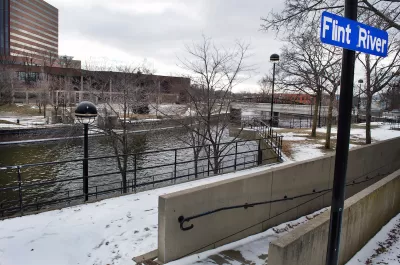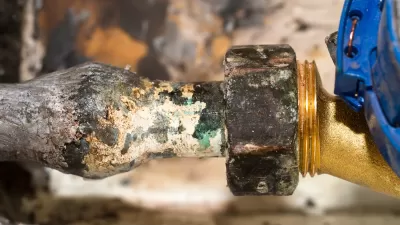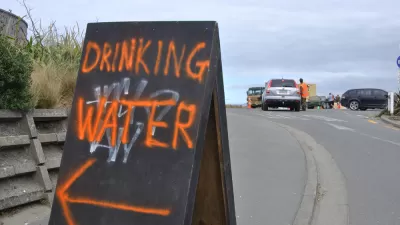A decade after the Flint crisis captured national attention, tens of thousands of US water transmission lines can still leach dangerous chemicals.

Despite the media coverage and outrage of residents in Flint, Michigan, communities around the country still face the risk of lead poisoning from corroded pipes, according to a report from Emily Kwong, Pien Huang, Rachel Carlson, and Rebecca Ramirez for NPR.
“In the last decade, the city's water quality has improved. Thousands of lead pipes in Flint have been replaced, but not all. That means that not every resident in Flint has clean, fresh water.” And the problem doesn’t stop in Flint. “A 2023 report from the EPA revealed that in 2021, lead made up 9% of the nation's service line infrastructure, representing an estimated 9.2 million pipes.”
Improvements to the 1991 Lead and Copper Rule proposed in late 2023 could finally require water systems to provide accurate information and enforce the replacement of lead pipes. However, a proposed exemption would give cities like Chicago an extension, letting them take multiple decades to replace infrastructure.
FULL STORY: 10 years after Flint, the fight to replace lead pipes across the U.S. continues

Planetizen Federal Action Tracker
A weekly monitor of how Trump’s orders and actions are impacting planners and planning in America.

Restaurant Patios Were a Pandemic Win — Why Were They so Hard to Keep?
Social distancing requirements and changes in travel patterns prompted cities to pilot new uses for street and sidewalk space. Then it got complicated.

Map: Where Senate Republicans Want to Sell Your Public Lands
For public land advocates, the Senate Republicans’ proposal to sell millions of acres of public land in the West is “the biggest fight of their careers.”

Maui's Vacation Rental Debate Turns Ugly
Verbal attacks, misinformation campaigns and fistfights plague a high-stakes debate to convert thousands of vacation rentals into long-term housing.

San Francisco Suspends Traffic Calming Amidst Record Deaths
Citing “a challenging fiscal landscape,” the city will cease the program on the heels of 42 traffic deaths, including 24 pedestrians.

California Homeless Arrests, Citations Spike After Ruling
An investigation reveals that anti-homeless actions increased up to 500% after Grants Pass v. Johnson — even in cities claiming no policy change.
Urban Design for Planners 1: Software Tools
This six-course series explores essential urban design concepts using open source software and equips planners with the tools they need to participate fully in the urban design process.
Planning for Universal Design
Learn the tools for implementing Universal Design in planning regulations.
Heyer Gruel & Associates PA
JM Goldson LLC
Custer County Colorado
City of Camden Redevelopment Agency
City of Astoria
Transportation Research & Education Center (TREC) at Portland State University
Camden Redevelopment Agency
City of Claremont
Municipality of Princeton (NJ)




























